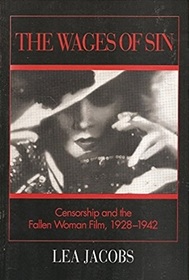Search -
The Wages of Sin: Censorship and the Fallen Woman Film, 1928-1942 (Wisconsin Studies in Film)
The Wages of Sin Censorship and the Fallen Woman Film 1928-1942 - Wisconsin Studies in Film
Author:
The story of the fallen woman was a staple of film melodrama in the late 20s and early 30s. In traditional versions of the plot a woman commits a sexual transgression, usually adultery. Expelled from the family, she becomes an outcast, often a prostitute, suffering various humiliations that usually culminate in her death. In more modern variants... more »
Author:
The story of the fallen woman was a staple of film melodrama in the late 20s and early 30s. In traditional versions of the plot a woman commits a sexual transgression, usually adultery. Expelled from the family, she becomes an outcast, often a prostitute, suffering various humiliations that usually culminate in her death. In more modern variants... more »
ISBN-13: 9780299128845
ISBN-10: 0299128849
Pages: 192
Rating: ?
ISBN-10: 0299128849
Pages: 192
Rating: ?
0 stars, based on 0 rating
Publisher: Univ of Wisconsin Pr
Book Type: Paperback
Members Wishing: 0
Reviews: Amazon | Write a Review
Book Type: Paperback
Members Wishing: 0
Reviews: Amazon | Write a Review
Genres:
- Business & Money >> Industries >> Sports & Entertainment
- Literature & Fiction >> Books & Reading >> Book Banning
- Humor & Entertainment >> Movies >> General
- Humor & Entertainment >> Movies >> History & Criticism




